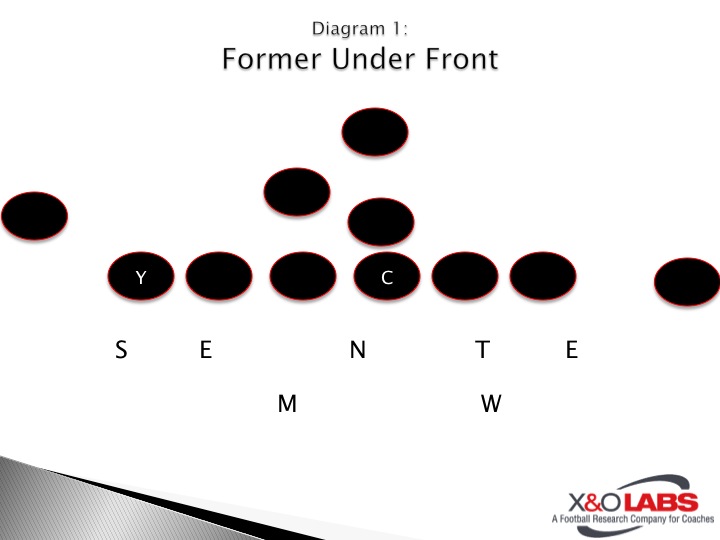Defensive Ends: Using Your 7-Technique to "Bully" Tight Ends
By Jared Pospisil
Defensive Columnist
X&O Labs
 Jared Pospisil, Defensive Columnist, X&O Labs
Jared Pospisil, Defensive Columnist, X&O Labs
Researchers’ Note: Please welcome Jared Pospisil to the X&O Labs’ team. Coach Pospisil is the Defensive Coordinator at Union High School (IA) and will now also serve as a monthly defensive columnist for X&O Labs. His previous report on his Cover 4 Run Read Drill is one of the most read and commented reports in X&O Labs’ history. As you’ll read in his first column below, Coach Pospisil brings a unique perspective to solving problems on the defensive side of the ball. And every month, Coach Pospisil will bring you unique – but proven – ways to better your defense. Please welcome Coach Pospisil by posting in the Comments section below.
One of the main things that has helped our defense improve over the past few years is the development of our defensive end play, particularly as it pertains to maintaining a solid C gap defender. What we do with our defensive ends is not groundbreaking; still, we are happy with our "Bully" method that we use to package and teach a particular DE concept in our Over 43 defense.
Ironically, it took getting a thumpin’ in the first round of playoffs four years ago to bring about the positive change. In that game, we played Crestwood High School (IA), a very physical, two-tight end, full-house backfield offense, whose main plays ran off the tight end’s rear. Crestwood routinely caved down our DEs so quickly that our linebackers and defensive backs did not have an opportunity to fill before the running backs were already five yards downfield. The next day, as I replayed the events of the game over and over in my head, I became sick thinking of how effective the off-tackle play was for our opponent and how ineffective our defense was at stopping it. Then I realized our defense faced many teams in our district whose main offensive plays ran off-tackle, and we did not defend that play well all year! From that day on our defensive staff set out to find a way defend the C gap better.
At the time, we utilized two 5-technique (outside shade of the offensive tackle) defensive ends in our Base Under front (Diagram 1). We taught them to key the ball and attack the outside shoulder of the offensive tackle across from them at the snap. Unfortunately, this left them extremely vulnerable to a down block from just an average tight end, notwithstanding some of the bulldozer types we regularly faced in our district. After talking to a few college coaches and watching film of a number of college and professional games, we decided that we would ask our DEs to widen to 7-techniques (inside shade of the TE) in an attempt to give our defenders a better chance to fight off the down block.

Still, we did not want to tell the defensive end "just line up wider." Instead, we set out to develop a concept labeled with a tag word for our new DE play, a tag word that would encompass the required alignment, key, responsibility, and technique. We settled on the term "Bully" because that is what we wanted our DEs to do to TEs: We expected the DEs to harass, beat up, and knock down TEs.
The "Bully" Technique:
7-Technique Defensive Ends
Now, any time our DEs see a TE align to their side, they are to utilize the Bully technique. We tell our Bully DEs to align their outside nostril to the TE’s inside nostril, as close to head-up as possible without actually being head-up (Diagram 2). The DE’s movement key is now the TE, not the ball. We used to be a ball-key team. However, we felt that when the DE looked down at the ball or the offensive tackle he was an easy blind side target for the TE. Now when the DE focuses on the TE, he has a fighting chance to maintain the C gap.









